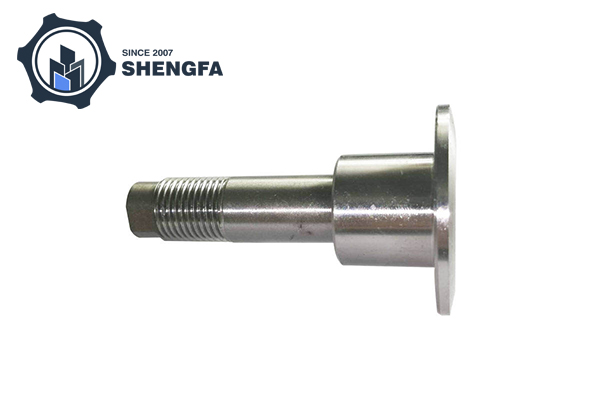Key Technical Advantages of Modern Metal Forged Parts
2025-09-28
Table of Contents
-
Unmatched Strength and Structural Integrity
-
Superior Microstructure: The Grain Flow Advantage
-
Exceptional Reliability and Fatigue Resistance
-
Key Product Parameters and Specifications
-
Frequently Asked Questions (FAQ)
Unmatched Strength and Structural Integrity
In the world of high-stakes manufacturing, where component failure is not an option, modern Metal Forged Parts represent the pinnacle of performance and reliability. The forging process, which involves shaping metal using localized compressive forces, fundamentally enhances the mechanical properties of the raw material. Unlike casting or machining from bar stock, forging aligns the metal's grain structure and compacts it, eliminating internal voids and porosity. This results in parts with superior strength-to-weight ratios, increased impact toughness, and greater structural integrity. For applications demanding the highest levels of safety and durability, such as in aerospace, automotive, and heavy machinery, forging is the undisputed manufacturing method of choice.
Superior Microstructure: The Grain Flow Advantage
A key differentiator of forged components is their controlled grain flow. During the forging process, the internal grain structure of the metal is deformed to follow the general contour of the part. This is in stark contrast to cast parts, which have a random, non-directional grain structure, or machined parts, where the machining cuts through the natural grain flow, creating potential weak points.
The continuous grain flow in Metal Forged Parts provides significant advantages:
-
Enhanced Impact Resistance: The part can absorb more energy before fracturing.
-
Improved Fatigue Strength: It better withstands repeated loading and unloading cycles.
-
Greater Structural Coherence: Stress is distributed evenly along the grain lines, reducing the risk of catastrophic failure.
This metallurgical superiority is a direct result of the forging process and is a critical factor for components like connecting rods, crankshafts, and landing gear.
Exceptional Reliability and Fatigue Resistance
Fatigue failure is one of the most common causes of part breakdown in dynamic applications. Modern Metal Forged Parts excel in environments subject to high cyclic stresses. The dense, non-porous structure and continuous grain flow work in concert to inhibit the initiation and propagation of cracks. This translates directly to longer service life, reduced maintenance downtime, and enhanced operational safety. When reliability is paramount, specifying forged components is a strategic decision that mitigates risk and ensures long-term performance.
Key Product Parameters and Specifications
To illustrate the tangible benefits, the following table outlines the typical superior mechanical properties achievable through modern forging techniques compared to standard casting.
Table: Comparative Mechanical Properties (Generalized for Carbon Steel)
| Mechanical Property | Modern Metal Forging | Typical Casting | Advantage |
|---|---|---|---|
| Ultimate Tensile Strength | 90,000 - 120,000 psi | 60,000 - 80,000 psi | ~50% Higher |
| Yield Strength | 60,000 - 90,000 psi | 30,000 - 55,000 psi | ~70% Higher |
| Elongation (% in 2") | 20% - 30% | 15% - 25% | ~33% More Ductile |
| Impact Toughness (Charpy V) | 40 - 60 ft-lb | 15 - 25 ft-lb | ~150% Higher |
| Fatigue Strength Limit | High | Moderate | Significantly Improved |
Furthermore, our forging capabilities cover a wide range of specifications to meet diverse industrial needs:
Common Specifications & Capabilities:
-
Materials: Carbon Steel, Alloy Steel, Stainless Steel, Aluminum, Titanium, Nickel-based Alloys.
-
Weight Range: From 1 kg to 100+ kg per part.
-
Tolerances: Standard tolerances conform to industry standards (e.g., ISO 2768-m), with precision forging achieving even tighter controls.
-
Post-Forging Treatments:
-
Heat Treating (Annealing, Normalizing, Quenching & Tempering)
-
Surface Finishing (Shot Blasting, Painting, Coating)
-
Precision Machining (CNC Turning, Milling, Grinding)
-
-
Quality Assurance: 100% material certification, Non-Destructive Testing (NDT) including Ultrasonic Testing (UT) and Magnetic Particle Inspection (MPI).
Frequently Asked Questions (FAQ)
1. What are the primary industries that benefit from Metal Forged Parts?
The primary industries are Aerospace (for landing gear, engine components), Automotive (for crankshafts, connecting rods, transmission gears), Oil & Gas (for valves, drill bits, and wellhead components), and Heavy Machinery (for high-wear components and structural parts). Any application where strength, safety, and longevity are critical is a candidate for forging.
2. How does the cost of forging compare to other methods like casting?
While the initial unit cost for forging can be higher than casting, the Total Cost of Ownership (TCO) is often lower. The superior strength and fatigue life of forged parts lead to fewer failures, less unplanned downtime, and reduced maintenance costs. For critical components, the cost of a failure far outweighs the initial price difference.
3. Can complex geometries be achieved through forging?
Yes, modern forging techniques, including precision closed-die forging and near-net-shape forging, can produce highly complex geometries. This minimizes the amount of subsequent machining required, saving on material waste and machining costs while still retaining the superior mechanical properties of a forged grain structure.
If you are very interested in our company's products or have any questions, please feel free to contact us.



